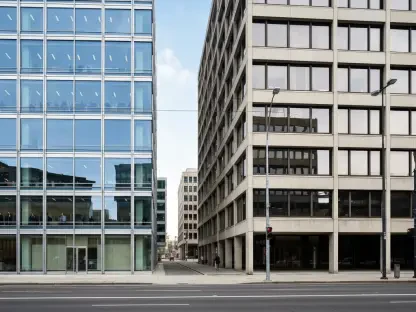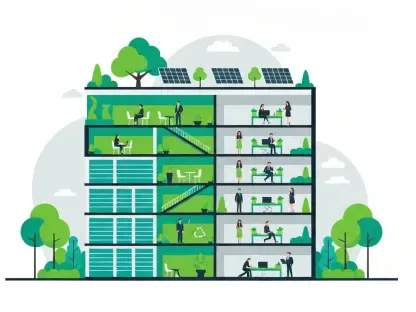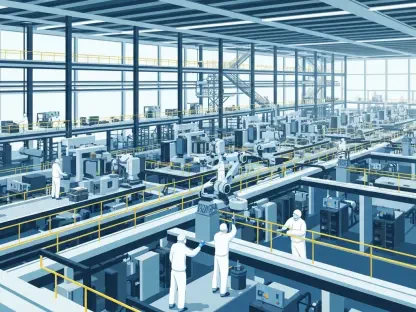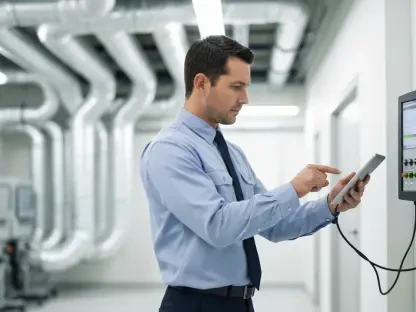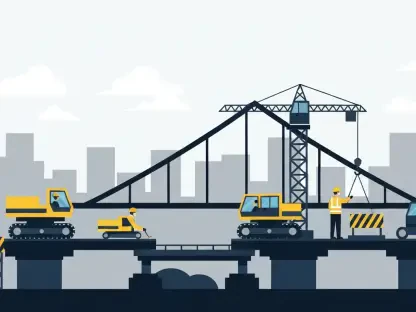In an era where urban centers grapple with relentless traffic congestion and pressing environmental challenges, light rail systems are experiencing a remarkable resurgence as a sustainable and efficient solution to modern city woes. With over 400 cities worldwide now operating light rail networks, these systems are not merely a mode of transport but a transformative force addressing population density, carbon emissions, and commuting inefficiencies. This analysis delves into the current trends shaping urban light rail innovations, spotlighting real-world implementations, gathering expert insights, exploring future prospects, and distilling key takeaways for stakeholders in urban transit development.
The Rise of Urban Light Rail Systems
Growth and Adoption Trends
Urban light rail systems have seen a significant uptick in adoption over recent years, with global investments soaring as cities prioritize sustainable transit. According to a report by the International Association of Public Transport, funding for light rail projects has increased by nearly 30% in the past decade, with regions like North America and Europe leading the charge. This surge reflects a growing recognition of light rail as a viable solution to urban mobility challenges, evidenced by rising ridership numbers that have climbed by millions annually in major metropolitan areas.
Beyond financial commitments, the expansion of light rail networks is evident in the sheer number of new projects underway. In the United States alone, over 20 cities have either launched or planned light rail initiatives since 2025, supported by federal and state infrastructure grants. These efforts underscore a broader shift toward reducing reliance on personal vehicles, aligning with global sustainability goals and urban density demands.
Real-World Implementations
A standout example of light rail innovation is the Interborough Express (IBX) in New York City, a $5.5 billion, 14-mile line designed to connect Brooklyn and Queens. This ambitious project, which leverages an existing freight line right-of-way for cost efficiency, aims to link 19 stations and integrate with 17 subway lines, slashing commute times by about 30 minutes. The design phase, currently in progress with a $166 million contract awarded to a joint venture of HDR and Jacobs, marks a pivotal step toward redefining transit in historically underserved communities.
Globally, other cities are also embracing inventive approaches to light rail. In Europe, cities like Strasbourg have seamlessly integrated light rail with bus and bike-sharing systems, creating a cohesive multimodal transit network. Meanwhile, in Asia, places like Chengdu have adopted low-cost models by retrofitting existing tracks, demonstrating how diverse strategies can address unique urban needs while promoting accessibility and efficiency.
Expert Perspectives on Light Rail Advancements
Insights from urban planners and transit authorities highlight the profound impact of light rail projects on city landscapes. New York Governor Kathy Hochul has described the IBX as a transformative endeavor, emphasizing its potential to unlock economic vitality in Brooklyn and Queens by shortening commutes and fostering connectivity. Such endorsements reflect a consensus among leaders that light rail is not just infrastructure but a catalyst for social and economic equity.
However, experts also caution against overlooking significant hurdles. Urban planners note that funding constraints often delay projects, while community displacement and environmental concerns during construction pose ethical dilemmas. Transit engineers further point out technical challenges, such as integrating modern signal systems with aging infrastructure, yet they remain optimistic about the long-term benefits of enhanced mobility and reduced traffic congestion in densely populated areas.
Future Directions for Light Rail Innovation
Looking ahead, the evolution of light rail systems is poised to be shaped by cutting-edge technologies and sustainable design. Innovations like advanced communication systems for real-time updates, solar-powered trains, and smart station layouts with automated ticketing are set to enhance user experience and operational efficiency. These advancements promise not only to cut carbon footprints but also to make transit more accessible across diverse socioeconomic groups.
Despite the optimism, challenges such as construction delays and budget overruns loom large on the horizon. Addressing these issues will require robust public-private partnerships and innovative financing models to keep projects on track. Additionally, urban equity remains a focal point, as planners strive to ensure that new lines serve marginalized communities rather than prioritizing affluent areas, thereby balancing growth with inclusivity.
The broader implications for urban planning are profound, as light rail systems could redefine cityscapes over the coming decades. By influencing commuting patterns, these networks may drive economic growth in peripheral zones, encourage denser development near stations, and reduce sprawl. As cities continue to evolve, light rail stands as a cornerstone for creating interconnected, sustainable urban environments that prioritize people over cars.
Conclusion and Call to Action
Reflecting on the journey of urban light rail innovations, the expansion and real-world impact of these systems underscore a pivotal shift in tackling urban challenges, while expert opinions reinforce their transformative potential. The exploration of future technologies and design trends points to a horizon filled with promise for enhanced connectivity and sustainability. Moving forward, stakeholders and policymakers must prioritize strategic investments and community engagement to navigate obstacles and maximize benefits, ensuring that light rail continues to pave the way for vibrant, accessible urban futures.


